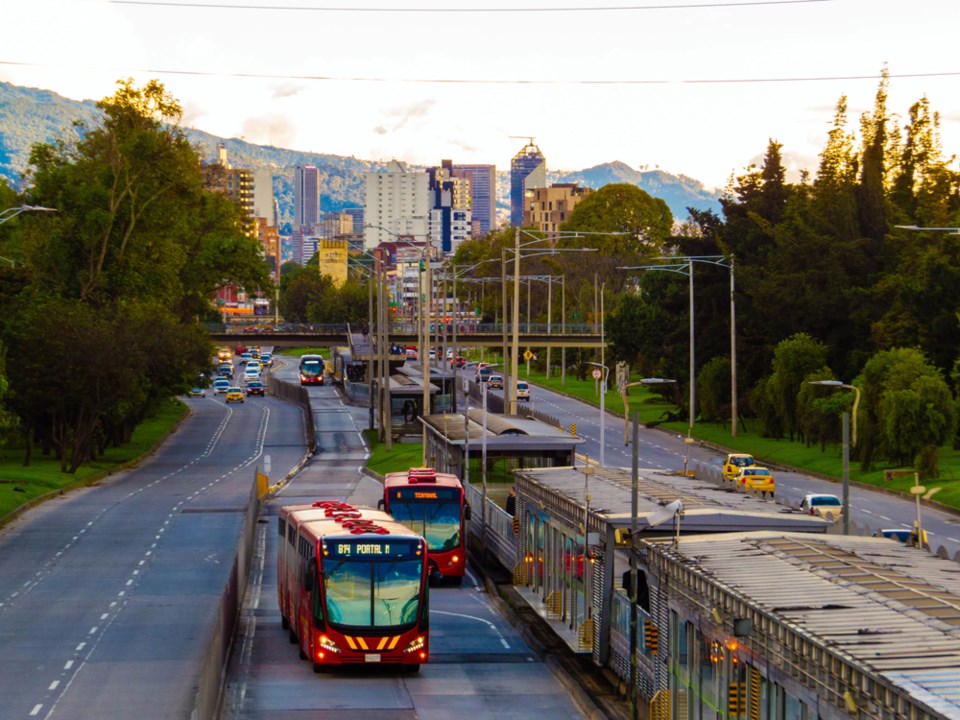A new bus rapid transit line linking Metrotown in Burnaby to Park Royal in West Vancouver via the Second Narrows is among the priorities in the next round of transit improvements brought forward by the TransLink Mayors’ Council.
TransLink debuted the 10-year plan on Wednesday (April 20).
There are nine bus rapid transit, or BRT, lines contemplated in the plan, although the one linking Metrotown to Park Royal is the only one listed for “immediate” planning and design work, with implementation expected in the second half of the 10-year plan.
The term "bus rapid transit" may call to mind the already existing RapidBus lines like the R2 and R5, but the technology, infrastructure, and service involved would be at a level not seen in Metro Vancouver before (although it has been deployed successfully elsewhere in the world). Design features cited by TransLink included stations and boarding experiences similar to a subway or LRT system, and dedicated lanes with traffic signal priority that allow the buses and their passengers to keep moving.
Speaking to reporters, TransLink CEO Kevin Quinn acknowledged that many residents would like to have seen rapid transit more along the lines of SkyTrain, but he said time is of the essence and the region can get more transit bang for its buck with BRT.
Bus rapid transit with dedicated lanes can be built for about $15 million per kilometre and be fully online within two to three years, while SkyTrain is closer to $400 million per kilometre and would take 10 to 12 years to be ready, the transit authority estimates.
City of North Vancouver Mayor Linda Buchanan expressed a similar sentiment.
“People in our community tell us all the time they're frustrated with congestion, they're frustrated with affordability, and the climate reality is important to them,” she said. “I think people are going to be excited to see that rapid transit is in the short term.”
Bus rapid transit will not mean reducing the number of general travel lanes on the Ironworkers Memorial Second Narrows Crossing, according to District of North Vancouver Mayor Mike Little and Buchanan, although the system will likely require its own elevated guideway to get the buses onto the bridge, or a new transit crossing.
“At this point, there is no conversation about taking away general purpose lanes,” Buchanan said. “We know that our system is so congested that that is not a solution.”
Elsewhere along the corridor, there may be some changes, but Little said the upshot will be faster commute times overall.
“We're going to have to sit down with the maps and the engineers and the planners and go over what can be achieved in the short term. … It doesn't mean that we have to do road allocation in every single space. For the most part, we're going to be able to do it with many of the techniques we've used along Main Street and Marine Drive already,” he said.
Little said he believes a bus rapid transit system could be built up over time to allow higher capacities and faster service.
“Once you have the guideway and the space set aside, you can upgrade it to [better] technologies in the future, and really link up the North Shore to the south shore economy,” he said. “I'm optimistic about what we can achieve even though we're starting out with bus rapid transit. We're going to be building up the system to the North Shore.”
A study released in 2021 by North Shore Connects, which is made up of the three North Shore municipalities and two First Nations, found a rapid transit line would take 50,000 vehicle trips per day off the two North Shore bridges.
Within the next five years, TransLink's plan calls for a new RapidBus connecting Lynn Valley to Downtown Vancouver, which could be upgraded to BRT in the latter half of the plan. In the six-to-10 year time frame, there could be an Ambleside-Downtown RapidBus. (West Vancouver council unanimously rejected the R2 RapidBus past Park Royal in 2019.)
By 2035, the North Shore’s bus service should increase by 1.1 million hours per year, or 190 per cent higher than what it is today.
Plans for the SeaBus include keeping the 10-minute sailings during rush hour, increasing off-peak frequencies, extending start and end times to match those of the Expo Line, and replacing one of the older vessels with the first zero-emission model in the fleet.
Little said he also appreciates the plan sending more buses to the North Shore’s major parks, as weekend vehicle crossings over Ironworkers are now higher than weekday ones.
North Vancouver Chamber president Patrick Stafford-Smith said he completely agrees with the rationale for BRT, especially if it means it can be built on an expanded later.
“I'm really excited. I think this is fantastic news. We've been fighting for the last five or six years to get news like this,” he said. “We all know we can’t get fixed-link rapid transit tomorrow, but we can get bus rapid transit tomorrow, and that is a great step forward in the short term.”
Stafford-Smith said he and the chamber’s members are pleased with the Metrotown alignment.
“We need to connect where people live and where people work and right now, a lot of the people trying to get to the North Shore, as we see with how busy the Second Narrows bridge is, are collecting from the southeast of Metro Vancouver,” he said. “I think it'll also get people out of their cars who want to and it'll hopefully free up some of the roads for the people who don't have a choice.”



